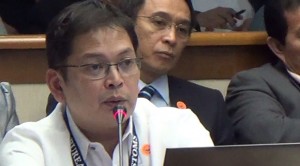Customs chief bares reforms in next 12 months
MANILA, Philippines—The reorganized Bureau of Customs has lined up more than a dozen reform initiatives to carried out in the next 12 months to improve revenue collection as well as drastically reduce, if not totally eliminate, corruption in the Department of Finance-attached agency.
Customs Commissioner John Phillip Sevilla told Customs stakeholders early this week they would put in place far more aggressive reforms between now and June 2015.
At a briefing for traders, brokers and other business groups at the Asian Development Bank on Tuesday, Sevilla said the bureau was moving in the right direction with these reforms, which include “making all Customs transactions 100 percent electronic and paperless and utilizing single and centralized assessment and valuation of imported goods.”
He said the bureau would work for the “maximized use of X-ray machines at the country’s ports, sale and disposition of abandoned, seized and forfeited imported goods within two months of the resolution of legal proceedings, fully electronic record-keeping for Customs bonded warehouses, pre-shipment inspection of goods, vessel tracking system, and examination of at least two percent of all containers within 72 hours upon their arrival in the country,” among others.
Sevilla reported that during the first quarter of the year, the bureau had conducted an undisclosed number of “high-profile raids and seizures” of misdeclared and undervalued imported goods.
Article continues after this advertisementAs of March 2014, the BOC had strictly enforced the “No more rice imports without import permits” and “No Bureau of Internal Revenue importer clearance certificate, No BOC accreditation” policies.
Article continues after this advertisementIt also put up a reference pricing for imported steel and resins and made regular disclosures of BOC consumption entries data and weighted average dutiable values for all imports, he said.
Sevilla claimed the reforms were “starting to work,” noting that one of the key performance indicators for the reform program’s success was the improvement in cash collections.
“Emerging cash collections of the bureau for the months of November 2013 to January 2014 registered a 19.2-percent growth rate over the comparable period in 2012 to 2013,” he said.—Jerry E. Esplanada
RELATED STORY
